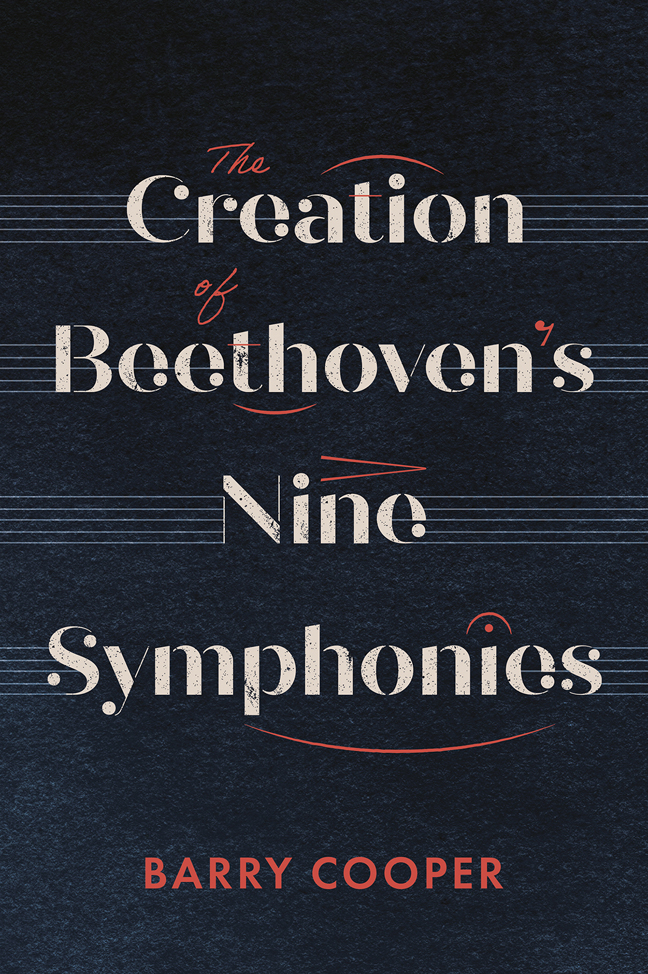Book contents
- Frontmatter
- Contents
- List of music examples
- List of tables and figures
- Preface and acknowledgements
- Abbreviations
- Introduction
- 1 The Long and Hazardous Road to the First Symphony, Op. 21
- 2 A Creation in Two Parts: The Second Symphony, Op. 36
- 3 Elevating the Genre: The Third Symphony (Eroica), Op. 55
- 4 The Oppersdorff Connection: The Fourth Symphony, Op. 60
- 5 Motivic Intensity: The Fifth Symphony, Op. 67
- 6 ‘More an Expression of Feeling than Painting’: The Sixth Symphony (Pastoral), Op. 68
- 7 ‘Great, Exalted’ Work: The Seventh Symphony, Op. 92
- 8 ‘Just Because it is Much Better’: The Eighth Symphony, Op. 93
- 9 The Philharmonic Connection: The Ninth Symphony, Op. 125
- 10 Epilogue
- Bibliography
- Index of Music Manuscripts
- Index of Beethoven’s Works
- General Index
8 - ‘Just Because it is Much Better’: The Eighth Symphony, Op. 93
Published online by Cambridge University Press: 02 March 2024
- Frontmatter
- Contents
- List of music examples
- List of tables and figures
- Preface and acknowledgements
- Abbreviations
- Introduction
- 1 The Long and Hazardous Road to the First Symphony, Op. 21
- 2 A Creation in Two Parts: The Second Symphony, Op. 36
- 3 Elevating the Genre: The Third Symphony (Eroica), Op. 55
- 4 The Oppersdorff Connection: The Fourth Symphony, Op. 60
- 5 Motivic Intensity: The Fifth Symphony, Op. 67
- 6 ‘More an Expression of Feeling than Painting’: The Sixth Symphony (Pastoral), Op. 68
- 7 ‘Great, Exalted’ Work: The Seventh Symphony, Op. 92
- 8 ‘Just Because it is Much Better’: The Eighth Symphony, Op. 93
- 9 The Philharmonic Connection: The Ninth Symphony, Op. 125
- 10 Epilogue
- Bibliography
- Index of Music Manuscripts
- Index of Beethoven’s Works
- General Index
Summary
Allegro vivace e con brio
Allegretto scherzando
Tempo di Menuetto
Allegro vivace
The symphony that began as a concerto
Beethoven’s Seventh and Eighth Symphonies are often seen as a pair, and they were composed consecutively. Although the Seventh has always been more popular and more highly regarded by most observers, this may not have been Beethoven’s view: according to Czerny, when they were first performed together and the Eighth was less well received, Beethoven said angrily, ‘Just because it is much better.’ Despite its greater brevity, its sketches occupy about as much of the Petter Sketchbook as those for the Seventh, which might imply that he actually expended more energy per bar in the Eighth than in the Seventh, even if he did not genuinely believe it was ‘much better’. The last known sketches for the Seventh, on folio 35r, are followed on the verso of the same leaf by the earliest known sketches for the Eighth, and almost all known sketches for the Eighth appear in the rest of the sketchbook or on leaves that have since been removed from it. Studies by Sieghard Brandenburg and Alan Tyson indicate that four such leaves are known. The proximity of the two symphonies, with the main sketches for both confined to a single sketchbook, was unprecedented, and might suggest that Beethoven was planning a pair of symphonies from quite an early stage.
The obvious purpose for such a pair of symphonies would be as part of plans for a future benefit concert (Akademie). Each of his three previous benefit concerts, in 1800, 1803 and 1808, had followed the same broad pattern. There were always two symphonies: the First Symphony and one by Mozart in 1800; the First and Second in 1803; and the Sixth and Fifth in 1808. There was also a piano concerto – No. 1 in 1800, No. 3 in 1803 and No. 4 in 1808 – and at least one vocal work: excerpts from Haydn’s Creation in 1800; the oratorio Christus am Oelberge in 1803; and several vocal movements including two from the Mass in C in 1808. Having completed the Seventh Symphony in April 1812, therefore, Beethoven would need to compose a new symphony and a piano concerto for a forthcoming concert.
- Type
- Chapter
- Information
- The Creation of Beethoven's Nine Symphonies , pp. 197 - 227Publisher: Boydell & BrewerPrint publication year: 2024

